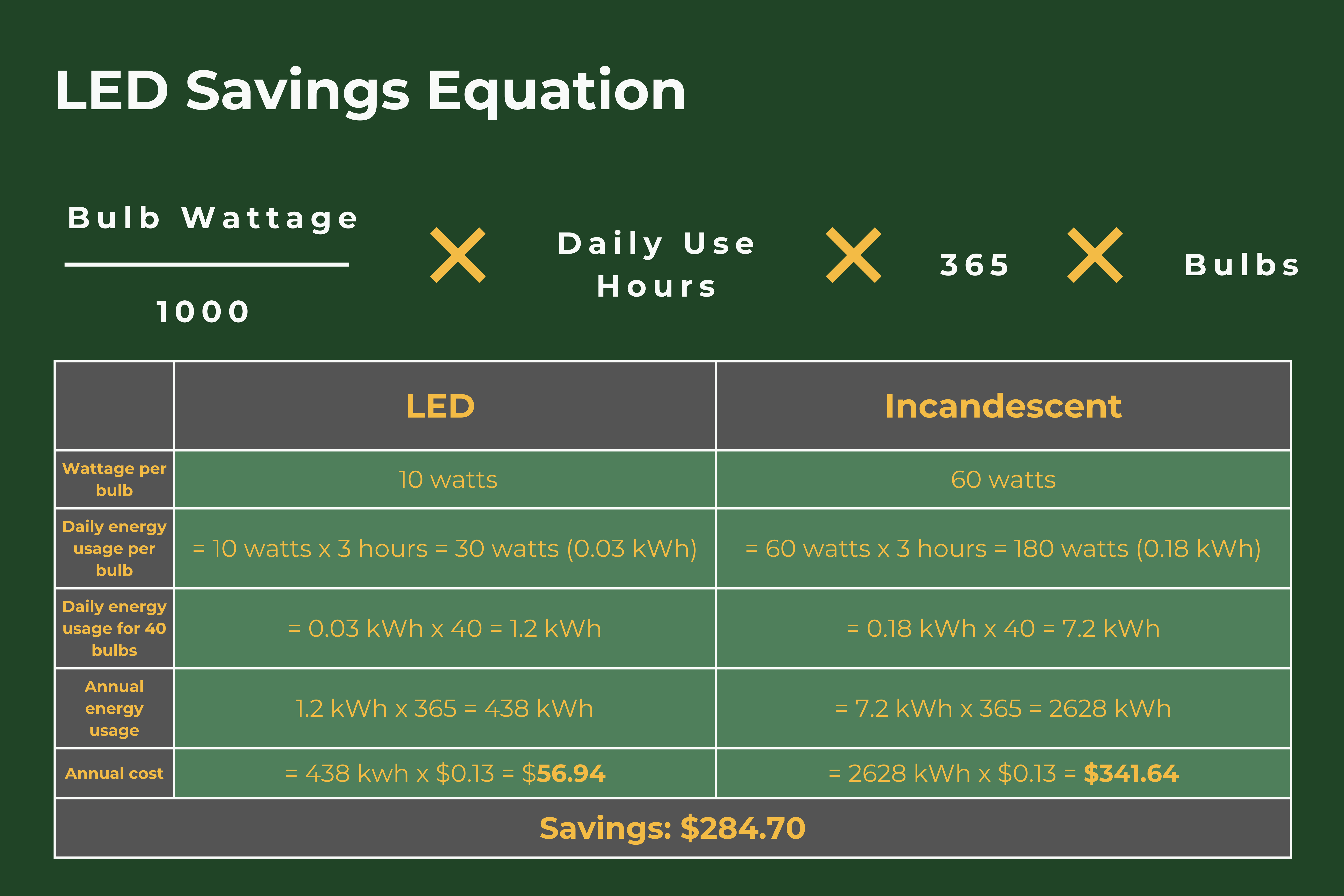
4
minutes
Power, Heating, and Cooling Systems
Lower heating and cooling expenses and optimize energy usage with advanced methods and technologies.
The Importance of Efficient Power and Climate Control Systems
Efficient temperature regulation systems, lighting, and backup power increase your home’s resilience by optimizing energy use, comfort, and reliability. Below are the best options for Big Sky.
HVAC
Did you know that reducing the temperature by just 3°F for 24 hours a day can save 30% on heating costs? According to the Montana Department of Environmental Quality (DEQ), 40-50% of Montana's household energy is used for temperature regulation. This makes heating, ventilation, and air conditioning (HVAC) a valuable opportunity to save money and energy. Read on to understand your options for HVAC energy conservation.
Types
Central HVAC: Heat and cool a building through a network of ducts that circulate air.
Ductless Systems: Utilize individual units in each room connected by refrigerant lines, allowing for temperature control in each room. Ductless systems are more efficient than traditional ones because they eliminate energy lost through ducts.
Temperature Setting Recommendations:
Winter: 68℉
Summer: 78℉
Sleeping: 60-67℉

Heat Pumps
Heat pumps are an energy-efficient electric option that can heat and cool, the air inside your home with a single machine. Rather than relying on burning fuel to generate the heat, they concentrate and transfer heat from the air into your home during the winter and reverse this process to cool your home in the summer.
Check out this short video to see how heat pumps work during the cold winter months in Big Sky.
Air Source

How It Works
Air source heat pumps feature an outdoor unit connected to one or more indoor units by refrigerant lines. They can distribute temperature-controlled air throughout your home using ducts, much like traditional heating and air conditioning systems.
Alternatives include ductless mini-split and mini-duct systems, which are hybrids of ductless and ducted systems. Additionally, air-source heat pumps can supply heat to in-floor radiant heating systems, commonly called air-to-water heat pumps.
Cold Climates
Heat pumps have historically only worked in mild climates, but recent advancements in cold-climate technology have dramatically improved their performance. Heat pumps have long been popular in countries like Norway, Sweden, and Finland and are now gaining traction in the US’s northern climates, such as Maine and Alaska.
However, depending on your home setup and ability to retrofit with a heat pump, keeping a backup heating source for particularly cold days might be wise. Even with a backup heating source, a heat pump can handle the majority of your heating needs and all of the cooling load.
Explore the NEEP Heat Pump Database to determine what heat pumps will work well in our Big Sky climate.

Recovery Ventilators
With a tight building envelope, it is important to replace indoor air with fresh outdoor air. A heat recovery ventilator (HRV) ensures a continuous supply of fresh outdoor air and improves your home's health, cleanliness, and comfort.
Heat Recovery Ventilators (HRV)
A heat recovery system works through a heat recovery ventilation (HRV) unit, typically located in the attic, roof space, or plant room of a building. Rather than just extracting indoor air and replacing it with outside air, this system captures heat from the outgoing air and transfers it to incoming fresh air. This process ensures that the extracted and incoming airflow through different pipes and, therefore, do not mix, preventing cross-contamination. The HRV unit is connected to the home’s network of ducts, which distribute air throughout the building.
By utilizing existing heat, a heat recovery system significantly reduces our collective environmental impact and daily heat loss. These systems capture a property's warm air or water and repurpose it to enhance energy use by reducing waste.
Energy Recovery Ventilators (ERV)
Like HRVs, ERVs exchange stale air for fresh air. However, HRVs only pull heated and cooled air, while ERVs exchange both air and moisture, keeping air from getting too dry in the winter and managing excess humidity in the summer. Air that’s too dry or humid can pose health issues, so many choose ERVs to manage their indoor air quality and air moisture.
How Do I Decide?
Most of the time, people will end up with an ERV because unless you live in a very consistent, mild environment, your air will either be too dry or too humid and need more of the other. While HRVs are more efficient at transferring heat and ERVs add to the latent load of a home, HRVs don’t prevent health issues that arise from too much moisture, like mold growths, or air that’s too dry, like respiratory irritation. When choosing which option is right for you, consider your climate and the health risks of not having humidity regulation as part of your ventilation system.
Water Heating

Heat pump water heaters (HPHWs) cost slightly more than standard electric or propane water heaters, but can easily pay for themselves in annual energy cost savings.
HPWHs reduce CO2 emissions by about 50% and are more efficient than Energy Star natural gas heaters. Their efficiency depends on incoming water and ambient air temperatures, which vary significantly by climate, so having realistic expectations for their unassisted performance is key.
Water heaters are the second-largest energy users after heating and cooling systems. Switching to an ENERGY STAR-certified electric water heater can save a family of four an average of $550 a year. Those savings and rebates from the Inflation Reduction Act mean a homeowner could recoup the cost in as little as three years.
Efficiency Comparisons
- Electric Resistance Water Heaters: HPWHs consume about one-third as much energy as traditional models, reducing your annual energy costs for hot water by 67%.
- Energy Star Propane Water Heaters: HPWHs are about five times as efficient compared to standard propane water heaters, reducing annual energy costs by 75% and carbon emissions by 60%.
- Energy Star Natural Gas Water Heaters: HPWHs are about five times as efficient, with 50% less carbon emissions, and have similar annual energy costs.
For more on how heat pump water heaters work, watch this video: WATCH THIS VIDEO: https://youtu.be/f7KeX8bse-0
Tankless Electric Water Heaters
With their high power draw, tankless electric water heaters are often impractical for the whole home. However, they can be easily adapted for point-of-use heaters for remote fixtures. A smaller heat pump tank can provide the same effective volume as a larger conventional tank by setting a higher tank temperature and using a thermostatic mixing valve to deliver lower-temperature water.
Energy-Saving Technologies
Smart Home Systems

Smart home systems connect devices that allow you to track and automate functions to operate at peak efficiency remotely. Devices like thermostats, exterior security lighting, and appliances can be timed to shut down to utilize less electricity. Many appliances actively use energy while idling, so this is a good mechanism to cut down on overall energy use by 10% or more.
- Smart Thermostats: Smart thermostats automatically adjust home temperatures to optimize energy usage based on your schedule and preferences.
- Smart Lighting: Automate lighting and set a schedule to control brightness.
- Smart Plugs: Remotely turn off devices to control energy consumption.
Home Automation Systems: Integrate your devices into one cohesive system to control all devices from one place.

Lighting
Daylighting
Daylighting uses natural light to light buildings during the daylight hours. This offers significant energy savings in two key areas:
Lighting
By harnessing daylight, you can replace artificial light during the day, reducing your energy usage by up to 75%.
Heating
Natural sunlight can warm your home during cooler seasons and reduce heat loss when paired with the right natural light products.
Energy Efficient Light Bulbs

LED (light-emitting diode) lighting offers significant advantages over traditional incandescent and fluorescent lighting in energy efficiency and lifespan, using 75-90% less energy and can last up to 25 times longer than incandescent bulbs. This reduces energy consumption and decreases the number of bulbs sent to the landfill.
How Do LEDs Work?
An electrical current flows through a microchip and powers tiny light sources known as LEDs. The heat generated by the LEDs is absorbed into a heat sink to prevent performance issues.
Why LEDs?
Switching from a 60-watt incandescent bulb to a 10-watt LED can save approximately $4.80 per bulb per year, assuming an average of 3 hours of usage per day and an electricity rate of $0.13 per kilowatt-hour. This translates to about $135 in savings per bulb over the bulb’s lifespan. Installing LEDs substantially reduces energy costs, making them a cost-effective and environmentally friendly lighting solution.














